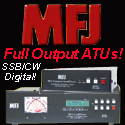MARS addsWinlink to e-comm arsenal
Discussion in 'Amateur Radio News' started by N1IN, Mar 3, 2006.
- Thread Status:
- Not open for further replies.
Page 18 of 22
Page 18 of 22
- Thread Status:
- Not open for further replies.










